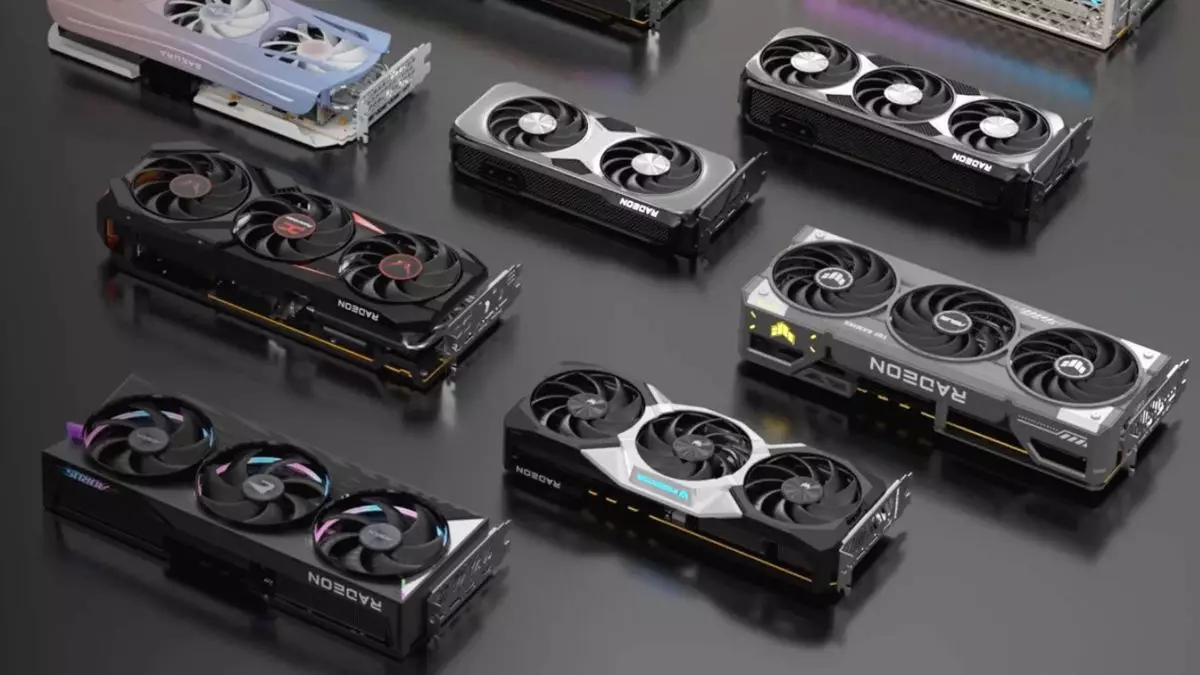The graphics processing unit (GPU) market has become a relentless battleground, with new releases often selling out in mere moments. This trend is evident with Nvidia’s highly anticipated RTX 50-series, which has amplified concerns among gamers regarding the accessibility of these powerful tools. As fans eagerly await the introduction of AMD’s RDNA 4 architecture, a critical theme has emerged from the community’s discussions: the demand for greater availability and value in these products.
As AMD’s Frank Azor took to social media to engage gamers about their expectations for the upcoming RDNA 4 GPUs, one sentiment overshadowed the rest: availability. Surging demand for graphics cards has led to frustrations among gamers, as many share experiences of missed purchases. This was starkly illustrated when one user articulated their concern about wanting “availability” front and center in any future GPU releases. It reflects a growing frustration among consumers, echoing the need for manufacturers to meet the surging demand caused by gaming popularity, eSports, and content creation streams.
In addition to availability, pricing continues to be a prominent theme. With the current market conditions, gamers are wary of the potential for inflated costs. The reminder from a user who expressed reluctance to spend more on a GPU than they did on their entire gaming rig resonates deeply within a community that has seen erratic price fluctuations over the past few years. For AMD, addressing these pricing concerns is critical as they look to launch the Radeon RX 9070 and 9070 XT in March, where consumer expectations will undoubtedly shape their success.
Advancements in Upscaling Technologies
Another significant aspect in which AMD aims to innovate is upscaling technology. Users are particularly eager for FSR 4, the potential successor to FidelityFX Super Resolution (FSR), signaling AMD’s intent to embrace AI-driven enhancements similar to Nvidia’s Deep Learning Super Sampling (DLSS). The AI upscaling domain is experiencing rapid evolution, but while AMD is making strides towards closing the gap, Nvidia has already moved ahead with cutting-edge upgrades such as the transition from CNN-based to transformer-based models in their scaling technologies.
Adopting FSR 4 will not only bring AMD into more competitive territory, but it also raises questions on whether they can effectively challenge Nvidia’s lead. Nvidia’s Multi-Frame Generation (MFG) has sparked discussions about the legitimacy of marketing claims that suggest new entries could outperform established models under specific conditions. Such claims often lead discussions to the broader implications of how marketing can twist performance realities, leaving consumers questioning the integrity of the figures they see.
Amidst the talk of advanced technology and performance metrics, one observation stands out: the industry’s shift in focus towards raster performance rather than ray tracing. Surprisingly, in the social media discussions regarding AMD’s RDNA 4, terms related to rasterization dominate the buzz, with users expressing a desire for “real frames per dollar” rather than an exclusive focus on ray tracing capabilities.
Ray tracing has been heralded as one of the flagship features of modern GPUs, offering lifelike lighting and shadow effects. However, it appears consumers’ immediate goals are more aligned with fundamental performance at a reasonable cost, suggesting that many gamers prioritize traditional performance metrics over newer features. This sentiment may offer AMD some room to maneuver, focusing on solid raster performance while developing ray tracing technologies over time.
AMD must consider these community sentiments as they gear up for the launch of RDNA 4. Observations about previous pricing strategies highlight potential pitfalls; consumers want aggressive pricing from the start. A proposed target price of $500 for the RX 9070 XT, while still ensuring competitive raster performance equivalent to Nvidia’s offerings, embodies the kind of consumer-centric approach that could bolster AMD’s position.
Furthermore, AMD’s ability to navigate consumer concerns regarding availability, pricing, and technological advancement will likely dictate their success in a high-stakes market. As the countdown to the RDNA 4 launch continues, AMD stands at a crucial juncture, where strategic decisions could either reinvigorate their market presence or leave them trailing in Nvidia’s shadow. The community’s collective voice amplifies the need for AMD to align its product offerings with consumer expectations, signaling that the race for graphical supremacy is far from over.

